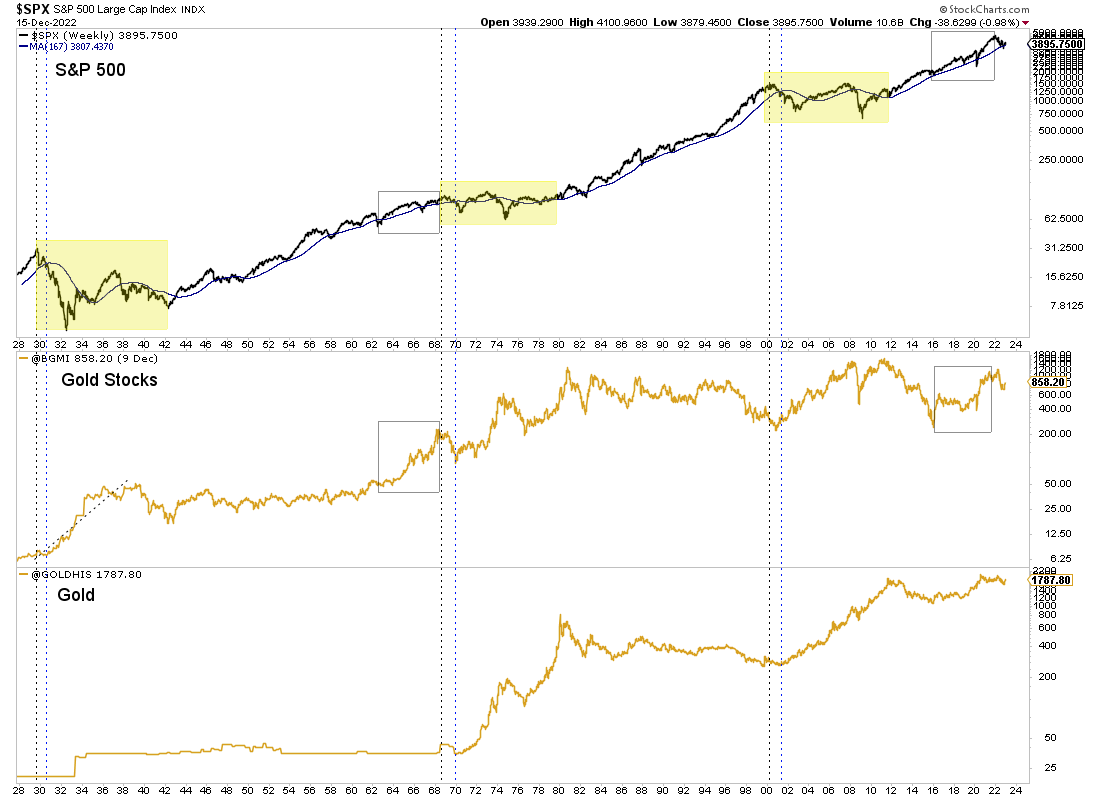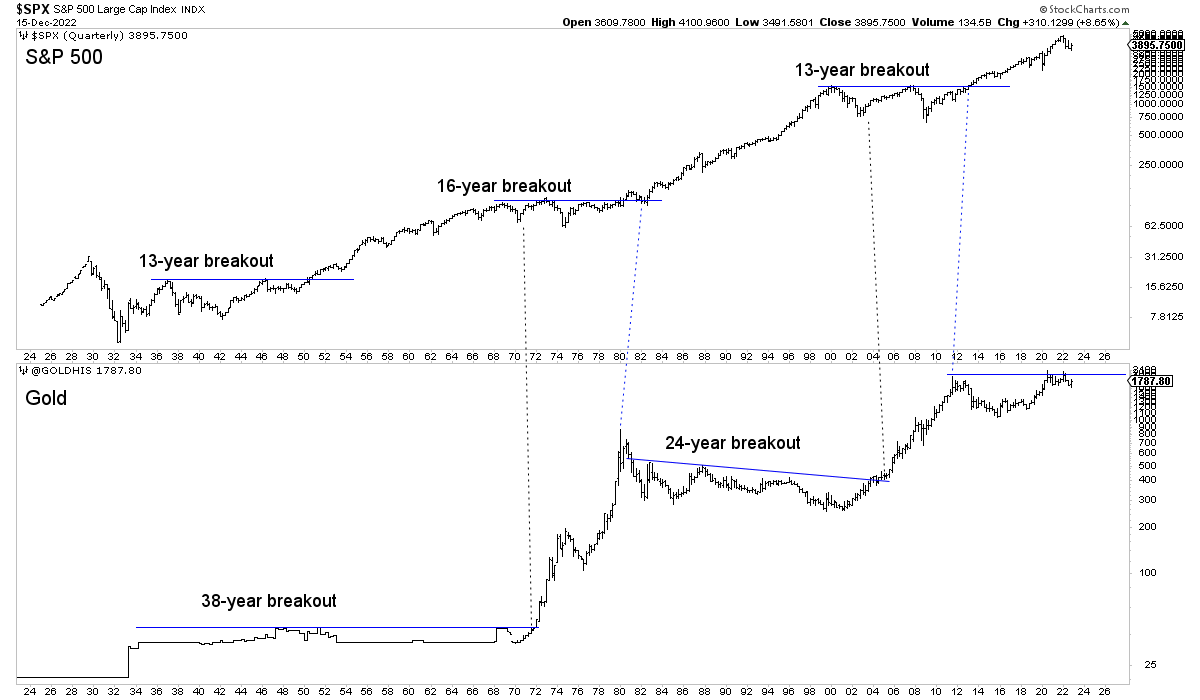Real Interest rates are the key driver for precious metals. Specifically, declining real interest rates and negative real interest rates drive precious metals higher.
However, there is a second driver that speaks to the secular trend. Over the years, I have learned that this is as important as the trend in real interest rates.
The best moves in precious metals (excluding the 1960s) all occurred during secular bear markets in US equities. Those secular bears occurred from 1929 to 1942, 1968 to 1982, and 2000 to 2009/2011.
As an aside, the gold stocks performed very well in the 1960s, but by then, the US equity bull market uptrend had slowed considerably.
The cyclical bull market in Gold from August 2018 to August 2020 did not evolve into a secular bull market because the US stock market remained in its secular bull market.
The chart below provides a historical context between the S&P 500, gold miners (Barron's Gold Mining Index), and Gold.
The vertical lines show the start of the secular bear market and when the S&P 500 declined below its 40-month moving average. The Gold bottoms in 1970 and 2001 coincided with the S&P 500 losing its 40-month moving average.

In my opinion, Gold and gold stocks have already bottomed. The gold stocks bottomed in late 2000, months before the S&P 500 lost its 40-month moving average.
In any case, if the S&P 500 were to lose its 40-month moving average (around 3,800) and lose the recent low of 3,500, it would all but confirm that the stock market is in a new secular bear market.

That would be an incredibly bullish development for precious metals—perhaps the most bullish development of the last two decades. Only Gold breaking past a 12-year base and $2,100/oz would exceed that.
The chart below shows that multi-decade breakouts in Gold and the S&P 500 usually follow a major secular peak in the counterpart.

The big breakouts in the S&P 500 (2013, 1982, 1951) followed major peaks in hard assets. The major breakouts in Gold (1971, 2005) occurred after the secular peaks in stocks of 1968 and 2000.
In short, the S&P 500 resuming its downtrend and falling to lower lows is an extremely important catalyst for precious metals and may only be a few months away.
As noted in our last missive, because precious metals have rallied with the stock market, they will likely decline as the stock market rolls over toward key support levels.
However, that is exactly the time we want to be buyers.
Pay attention because we could see some incredible values emerge over the weeks ahead.
I continue to focus on finding high-quality juniors with 500% upside potential over the next few years. To learn the stocks we own and intend to buy, with at least 5x upside potential in the coming bull market, consider learning about our premium service.

